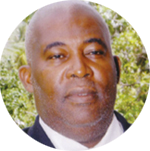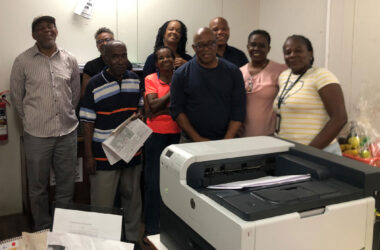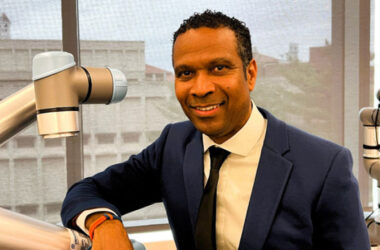
WELCOME students to another week in the Open School for the Second term for the academic or school year 2022 to 2023. The school is open to parents, guardians, teachers, students and members of the public. It is my hope that students will acquire knowledge and skills which will enable them to improve student achievement in Mathematics.
Today’s lesson is the final in the series on “Improving student achievement in Mathematics.” At the end of the lesson, students will be able to (1) Name three concrete materials other than those already mentioned in the lesson which can be used to teach children. (2) tell how can a calculator help students in Mathematics?
In reviewing the third lesson, we should have understood that teachers and facilitators of learning must be open to student solution methods and student interaction. They should be aware of how students construct knowledge and should also be familiar with intuitive solutions methods that students use when they solve problems.
Another focus of the lesson was that teachers and facilitators of learning should utilize small group learning, which would enable students to work on activities, problems and assignments.
I also pointed out that whole-class discussion should follow individual and group work.
And finally, I stressed that teaching Mathematics with a focus on number sense encourages students to become problem solvers in a wide variety of situations and to view Mathematics as a discipline in which think is important.
Today’s lesson is the final in the series on improving student Achievement in Mathematics. The focus will be on the use of Concrete Materials and the use of calculators in Mathematics Teaching and Learning.
The long-term use of concrete materials in the teaching and learning of mathematics is positively related to increases in student Mathematics achievement and improved attitude towards Mathematics.
Indeed, the use of concrete materials in teaching and learning has been advocated by philosophers and educationists for centuries. The use of concrete materials is linked to perceptual learning.
Young students in the Infant School can practice perceptual motor skills through active play, object manipulation, drawing, blocks and various other forms of physical activity. Most perceptual motor skills such as crawling, rolling over, jumping, reaching and walking, are developed naturally along normally expected growth time-lines.
Concrete models (such as boxes, tins, flat surfaces, blocks, bundles, sand etc.) can help students represent numbers and develop number sense; they can also help bring meaning to written symbols and can be useful in building place-value concepts. Teachers and facilitators of learning should try to “get inside students’ heads” as they work with concrete materials by asking questions that elicit their thinking and reasoning.
When I was a young teacher, some of my colleagues often expressed the feeling that as students get older, the use of concrete materials in teaching should be reduced or even abolished. They considered that teaching at the mastery level mainly would suffice.
It should be understood that the use of concrete material will depend, to a large extent, on student engagement. And student engagement means: “the degree of attention, curiosity, interest, optimism, and passion that students show when they are learning or being taught, which extends to the level of motivation they have to learn and progress in their education.” Very simple, the engagement should depend on the concept to be taught and the way in which student would participate and be involved in the lesson.
To a large extent, successful teaching requires teachers and facilitators of learning to carefully choose their procedures on the basis of the nature of the concept to be taught. However , research suggests that manipulative material should be used by teachers and facilitators of learning in order to give students hands-on experience that help them construct useful meanings for the Mathematical ideas they are learning.
We come now to students’ use of calculators in the learning of Mathematics.
When I was a student in primary school, I was not allowed to use a calculator during the Mathematics lessons. Thinking there was that students would become too reliant on the calculator instead of using the “brain” to do their computations.
To be frank, there is some merit in that thinking. Sometime ago, I went to a grocery shop to buy five items at fifty cents per item. The cashier pulled her calculator to arrive at the total ($2.50). That could have been done mentally by a student in Infant School quite easily. This is what teachers and facilitators of learning want to avoid.
Research in education strongly supports the use of calculators at all levels of Mathematics instruction. Using calculators in carefully planned ways can result in increases in student-problem- solving ability. By reducing computation time and providing immediate feedback, calculators can help students focus on understanding their work and justifying their methods and results.
Now the graphical calculator is particularly useful in helping to illustrate and develop graphical concepts. I see Measurement as an area where the use of graphing calculator could be very useful for the student learner.
Indeed, in order to accurately reflect their meaningful Mathematics performance, students should be allowed to use their calculators in achievements tests, in a quiet, non-disruptive way.
Now two questions for you: (1) Name three concrete materials other than those already mentioned in the article which can be used to teach children. (2) How can a calculator help students in Mathematics?












